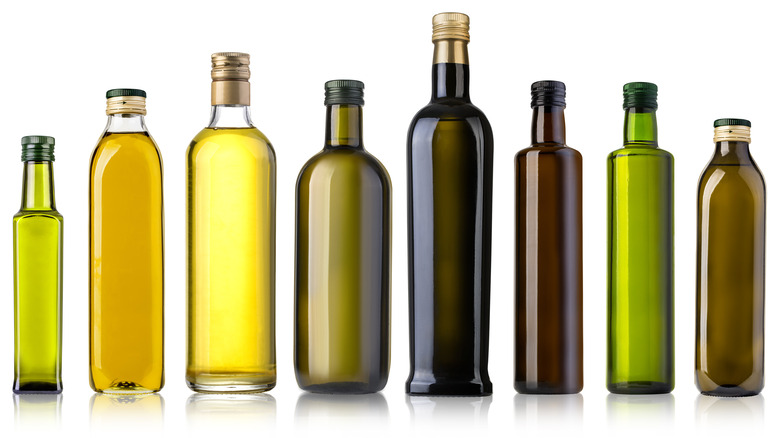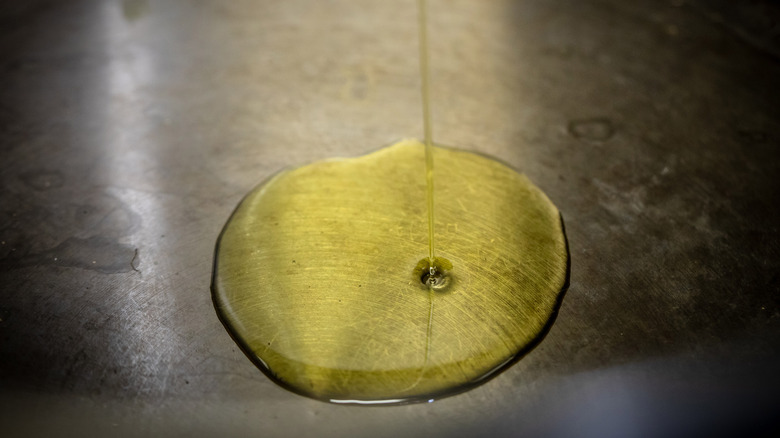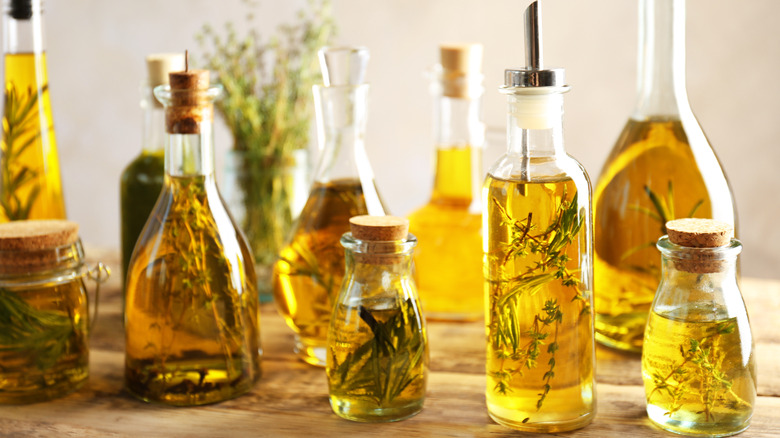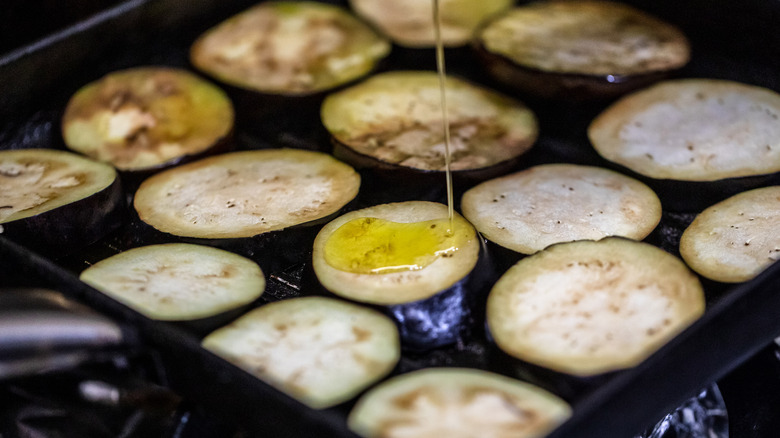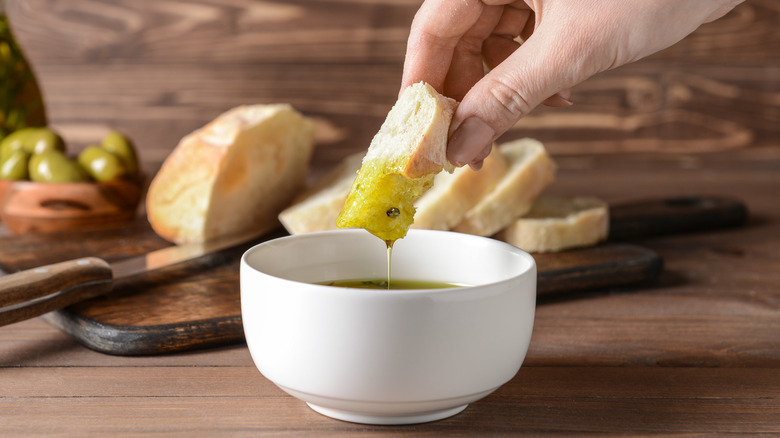Tips You Need When Cooking With Different Types Of Olive Oil
The fertile land of the Mediterranean makes the perfect home for the olive tree to grow, which has been cultivated for more than 6,000 years. While the specific origin of olive oil is unknown, it is suspected this rich liquid was first created in present-day Syria or potentially sub-Saharan Africa (via American Society for Horticultural Science).
Producers worldwide make a variety of olive oils, each with their own specifications. Though unique in some ways, they all start with roughly the same process: crushing the olives and removing the remaining solids from the resulting oil, explains HowStuffWorks. Distinctions lie in the mechanics of how the oil is produced, how many times the oil is extracted from the olives, and allowance for defects (via Greek Liquid Gold). Some common olive oil categories are light tasting olive oil, regular olive oil, virgin olive oil, and extra virgin olive oil, which increase in flavor and quality from light tasting to extra virgin — but that doesn't mean you should always use extra virgin, as each type of olive oil has its place in your kitchen. Here is a breakdown of what makes four types of olive oil unique and how to use them in your cooking.
Light Tasting Olive Oil
It's a common misconception that light olive oil is somehow healthier or lower in fat and calories than other varieties of olive oil, likely because of the "light" distinction in its title. The Spruce Eats explains light tasting olive oil is actually just extra refined (more so than any other kind of olive oil) and thus has a paler, light color. This refining is also what causes light tasting olive oil to be milder in flavor than other types of olive oil, making it a great option for baking as it won't overpower your dish if you want other flavors to shine through.
Light tasting olive oil also has a high smoke point compared to other types of olive oil at roughly 465 to 470 degrees Fahrenheit, so Bon Appétit recommends you choose it for high-heat cooking, like sauteing and frying. Light tasting olive oil is often also cheaper than the others, making it a better choice in applications — like frying — where you're probably going to use a lot of it.
Regular Olive Oil
Regular olive oil is a little less refined than light olive oil, making it a slightly more flavorful product — though not as flavorful as the coveted extra virgin. The Takeout explains that, like light olive oil, regular olive oil has a more mild taste due to the heat used in production to remove impurities. To make up for this, a percentage of extra virgin olive oil is often added in to boost the flavor lost during the refining process. The high heat used in the refining process also removes some of the antioxidants from olive oil. As Medical News Today explains: the more refined an oil is, the fewer antioxidants there are present.
Regular olive oil works well as a catch-all oil for everyday use as it can withstand higher heat and still impart a little of that classic olive oil taste but won't take over the flavor profile of whatever dish you're cooking. This is a great option for seafood, searing meat, or infusing with herbs and garlic for a finishing oil, as it will still let those flavors shine.
Virgin Olive Oil
To get the virgin olive oil distinction, producers cannot use any heat or chemicals to make it: virgin olive oil has to be completely unrefined, only separated and filtered from the solid olive remains, according to Greek Liquid Gold. The purity standards are not quite as high as those of extra virgin olive oil though, and more defects in the oil are possible, including fustiness, or slight fermentation in the olives before they are milled (via Olive Oil Times). This occurs when olives are left to sit for too long before processing.
As it is unheated, virgin olive oil does have more flavor and richness than light tasting or regular olive oil. OliveOil.com explains this product is often harder to find in grocery stores, but if you can get your hands on it, try using it in dishes or preparations that will leave any defects unnoticed, like roasting vegetables or baking.
Extra Virgin Olive Oil
Extra virgin is the gold standard when it comes to olive oil: It has a high amount of polyphenols, is incredibly flavorful, has high standards of production, and does not go through any refining processes, per Olive Oil Times. The oil earns its distinction by having a strong scent, robust flavor, unique mouthfeel, and none of the common defects permitted in other olive oil varieties. The USDA shares to be labeled extra virgin, olive oil must have an "excellent" taste and smell, be free of defects, and contain less than 0.8 grams out of every 100 grams oleic acid, among other requirements. In the state of California, some of these regulations are even more rigid.
You'll want to make the most of extra virgin olive oil's intense flavor, so this is a good choice for salad dressings and marinades, as a dipping oil, or drizzled on top of finished foods. The flavor of the oil is best appreciated before any heating, so HowStuffWorks recommends using it uncooked. The smoke point is also lower than other olive oils at 350 degrees, as Bon Appétit reports, meaning it is much easier to ruin when using it for cooking.
Other olive oils are also generally cheaper than extra virgin, so if you're going to shell out for this oil, make sure to get the most out of it.
